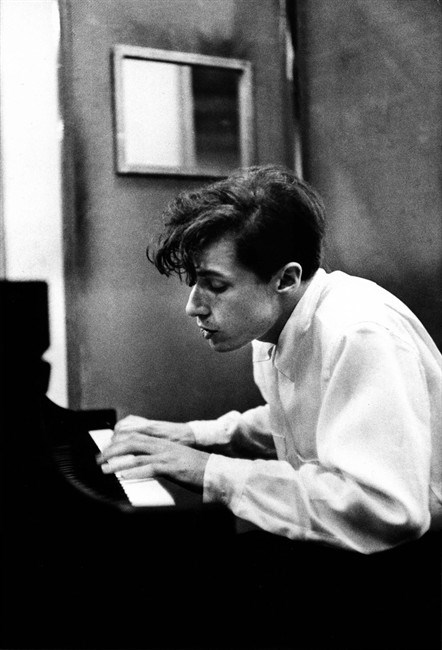“When Aunt Minnie can turn on her four-screen television and watch the Berlin Philharmonic, we will have reached total inwardness on the part of the audience.”
That was Glenn Gould, the Canadian pianist and champion of electronic media, speaking in 1962. I couldn’t help but think of Aunt Minnie when I heard about a series recently launched by the University of Victoria’s School of Music: screenings of live concerts by, yes, the Berlin Philharmonic, through that orchestra’s Digital Concert Hall program.
Since 2009, this program has allowed private subscribers to watch live and archived Berlin Philharmonic concerts on their computers and mobile devices. However, as one of the orchestra’s educational initiatives, Digital Concert Hall is also made available, at no cost, to 500 schools and universities around the world. UVic is now one of them, thanks to a successful application by Ajtony Csaba, an assistant professor in the School of Music who teaches conducting and directs the university’s orchestra and Sonic Lab.
Following some test transmissions last fall, the School of Music streamed its first live Berlin Philharmonic concert on Jan. 11. The next one will be shown on Saturday at 11 a.m. (8 p.m. Berlin time); it will be conducted by Zubin Mehta and will feature Webern’s Six Pieces, Beethoven’s Emperor concerto (with pianist Rudolf Buchbinder), and Richard Strauss’s tone poem Ein Heldenleben. The concerts are projected onto a screen in a large rehearsal room (MacLaurin B037), following a short introductory talk by Csaba.
These screenings, needless to say, are a boon for UVic music students (those enrolled in the orchestra or in a conducting course have additional access to Digital Concert Hall’s vast online resources). But the public is also welcome to attend, free of charge.
Two more Berlin Philharmonic concerts will be screened this semester, on March 8 and 29, both conducted by the orchestra’s artistic director, Simon Rattle. The latter concert will feature the renowned theatre director Peter Sellars’ staging of Bach’s St. John Passion. (Owing to scheduling conflicts, these will be delayed rather than live screenings.)
Digital Concert Hall is not the School of Music’s first effort at using technology to serve its community, raise its profile and broaden its reach. Since 2012, through its Listen Live! program, it has streamed certain student, faculty and other concerts online as live audio, from both Phillip T. Young Recital Hall and Farquhar Auditorium. This semester it will begin streaming some concerts as live video, too. It also plans to archive recordings of its own concerts online rather than in the university library, and to make some of these available to the public.
(For details about Digital Concert Hall and Listen Live!, go to finearts.uvic.ca/music/events.)
Of course, even half a century ago, when Glenn Gould was prognosticating about electronic media, live audio and video transmissions from distant lands were technologically feasible. Indeed, as early as the 1880s — decades before radio — there were technologies to transmit musical and dramatic performances live from theatres to private homes, hotels and such, sometimes in stereophonic sound, through the telephone system. (The Paris-based “théâtrophone,” to which Proust subscribed, was viable as far away as London.)
But no one pretended that the théâtrophone — or early records, or early radio and television broadcasts — could really take the place of a live concert; the sound and picture quality was simply too rudimentary. Today, however, the best recordings, broadcasts and online streams offer astonishing audiovisual quality, and digital technologies allow performances to be disseminated instantly and widely with no loss of quality in the process. The distinction between live and electronically mediated musical experiences now sometimes seems so thin as to make them almost equivalent.
So what are the consequences of new digital technologies for the artists and organizations involved in presenting live music to the public? This question is much on the minds of musicians and their sponsors everywhere these days, especially now that one’s local community often finds itself competing with the world at large, thanks to such phenomena as the Metropolitan Opera’s Live in HD program.
Within Victoria’s classical music community, one finds a wide range of opinions and practices when it comes to new digital technologies. I will explore them here next week.



